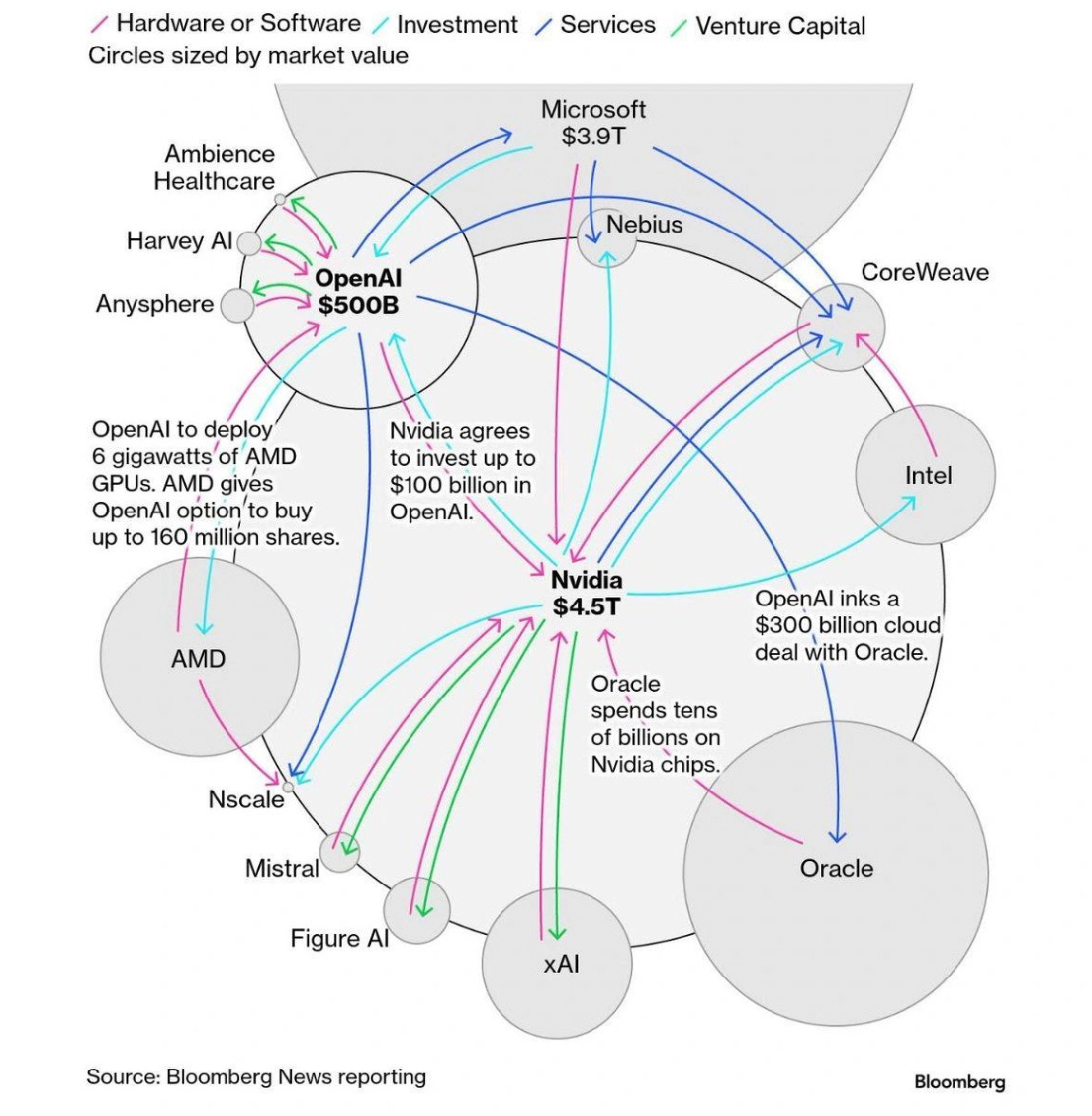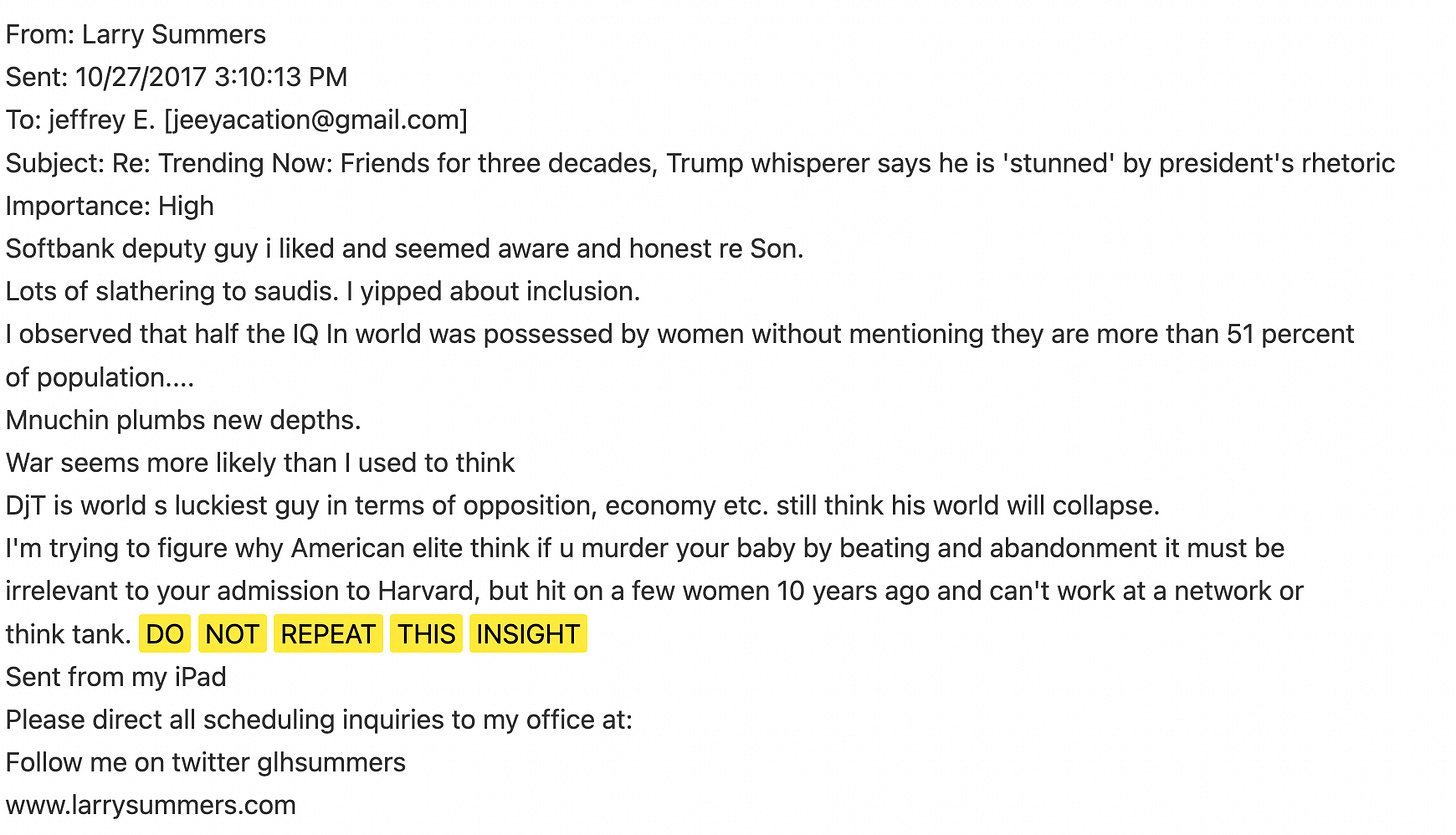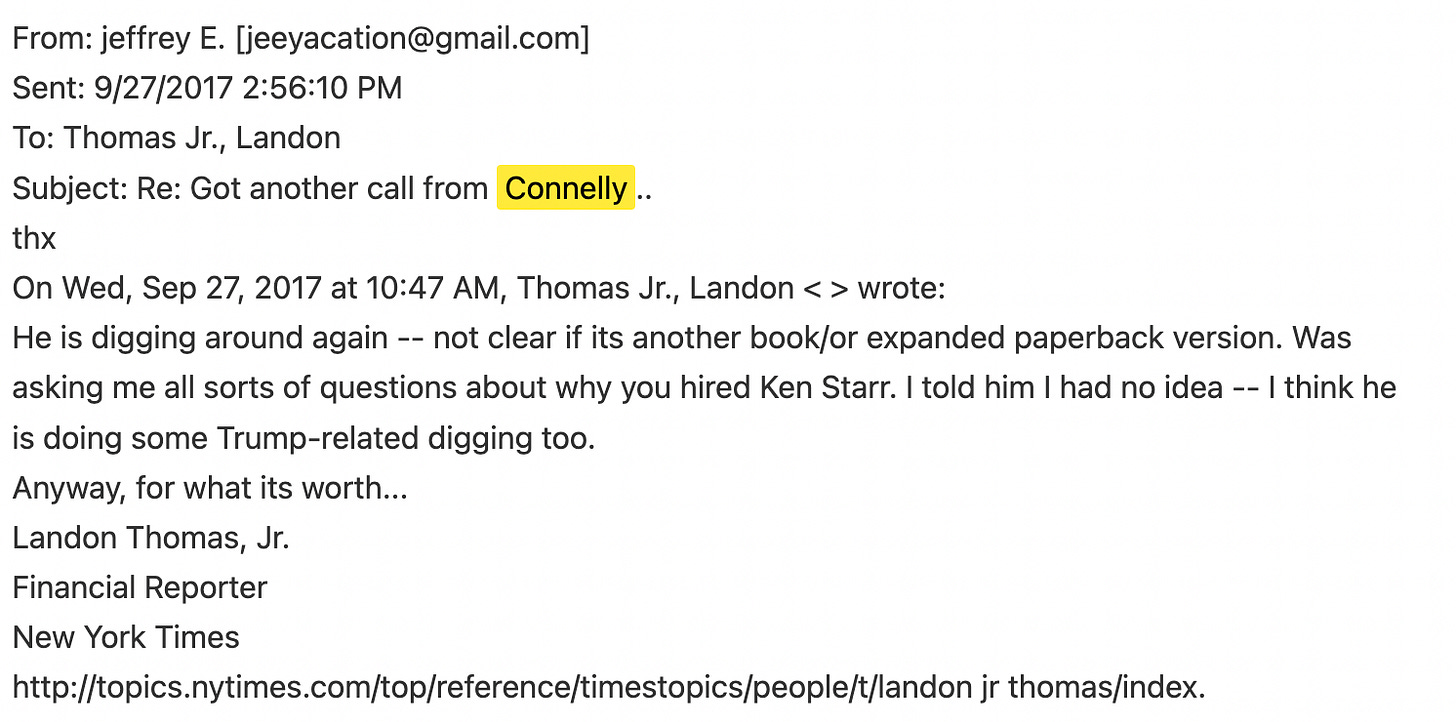Last week, ‘broligarchy’ was made one of Collins Dictionary’s words of the year, so I’m going to chance my arm and try and name what some of the smartest people I know say is happening right now. Something that they say is a systemic threat to the US economy and everything downstream from that.
Welcome to the Great AI Bubble, a metastasized trillion dollar tech tumour so massive it’s practically visible from space.
If you haven’t heard of this yet, it’s not because you’re not paying attention. It’s because the media is part of the same mystical amalgam of bullshit and vibes that’s keeping the whole thing afloat, a circular economy of access journalism and tech hyperbole that masks something stinking and rotten at its core: OpenAI.
I’ll come to why I think bubble-nomics is also a way to understand one of the defining scandals of our time – Jeffrey Epstein – but this story isn’t just about the potential crashing of the global economy. (Though it is that.) It’s also a tale of abuse. At the TED conference earlier this year, I stood on stage and called Sam Altman a data rapist and I take nothing back.
Some 18 months or so ago, I went for lunch with my friend Roger McNamee, a legendary Silicon Valley VC turned radicalised burn-the-whole-thing-down tech justice warrior, and I listened to him commit casual tech idolatry. At the time, the headlines were dominated – as they largely still are – by article after article claiming that generative AI is a technology will revolutionise the very fabric of humanity. Or maybe kill us. Or, maybe both. But then, these are two sides of the very same coin.
Roger, however, wasn’t buying it. In his view, generative AI was just yet another Silicon Valley hype cycle. Another crypto. Another metaverse. Another Web3. Another bro-tastic sales pitch attracting unprecedented amounts of capital that couldn’t ever possibly earn a return; a narrative that was being inflated with a quasi religious zeal by the usual suspects in league with a gullible and complicit media.
Roger was the first person I heard say these things but far from the last. This spring I met and began talking to Gary Marcus, an AI scientist and another trenchant observer of the tech industry, whose views on generative AI generally and OpenAI specifically have gradually been gathering attention. To crassly sum up his views: the emperor has no clothes.
And, then five weeks ago, there was, what felt like a species leap. I’ve watched as these views have gone from niche lone voices on the periphery to headlines in the business press and what’s been fascinating is how they’re now gaining currency across social media, largely due to one piece of brilliant data journalism.
This graphic, published by Bloomberg, gave the story a single, impossible-to-forget image. It transformed the impenetrability of global economics into something that is immediately both visible and understandable.
Because if you want to know what a bubble looks like, it’s this:
The graphic isn’t properly credited so I can’t give the right person their due but the accompanying article “OpenAI, Nvidia Fuel $1 Trillion AI Market With Web of Circular Deals” is by two journalists Emily Forgash and Agnee Ghosh and what it does is instantly illuminate a circular economy of loans and debts and froth and hype…all entirely dependent upon one another. This emperor has $1 trillion and not a stitch to wear.
What we’re seeing is a closed doom loop underpinned by…well, what exactly? The promise of a world-changing technology that, guess what, isn’t here yet and there’s no real sign that it ever will be. These companies are stealing every scrap of data they can find, throwing compute power at it, draining our aquifers of water and our national grids of electricity and all we have so far is some software that you can’t trust not to make things up.
What’s enormously helpful in terms of getting to grips with this story is the ever unreliable Sam Altman, his performance this week summed up here:
Altman gave a car crash of an interview that you might as well watch now because it’s going to end up in a Netflix documentary at some point in the not too distant future.
This was not a hard interview. It was a bro-to-bro podcast but Altman had a meltdown. In response to a question about how a company will be able to spend $1.4 trillion when its revenue is only a tiny fraction of that, Altman throws a hissy fit: “If you want to sell your shares,” he tells the interviewer. “I’ll find you a buyer. Enough.”
It’s generally not a good idea for CEOs to tell their customers to sell their stock though it is how fraudsters tend to talk. If you don’t want to claim the million dollars I have for you in a Nigerian prince’s bank account, that’s up to you but you’re the one who’s going to miss out.
I asked Roger McNamee to record a voice note to explain what is going on and this is how he begins:
“Hi Carole, the bubble around LLMs and AI is really something to behold. I’ve been in the investment business since 1982 and I have never seen anything remotely like it.”
He points out that more money has been invested in technology since 2022 – the aforesaid trillion dollars – than he believes has been invested in technology ever and ends:
“It’s almost inconceivable that the trillion dollars will provide a reasonable rate of return, and so it does seem that it’s only a matter of time until this whole thing blows up. Now, I think the game that these guys are playing is different than the traditional one that you see on Wall Street. I think they know they’re in a bubble, and I don’t think they care….
“The whole thing is crazy, but it can keep going on because, you know, there’s just no way to tell when a bubble is going to end. When it does, though, it’s going to end with, I think, a bang.”
Listen to the voice note here or there’s a full transcript here for those who prefer to read:
I asked Gary Marcus the same question. He’s made a series of predictions about OpenAI that have, so far, turned out to be correct and believes that the current model of throwing shedloads of data at the wall is vanishingly unlikely to ever lead to AGI.
Is generative AI a bubble, I asked him? And if so, is it going to crash?’ His voicenote is below (and a full transcript here),a brilliantly succinct one minute summation that includes this line:
“I keep thinking of Wiley Coyote at the edge of a cliff in the roadrunner cartoons, and he doesn’t fall until he looks down. The question is, when are people going to look down? The finances don’t make any sense, and I think they’re starting to look down.”
Bubble-nomics
Maybe, it’s the old adage that to a man with a hammer, everything looks like a nail, but as I was thinking about all of the above, I found myself transfixed by the 23,000 Epstein emails released this week by the House Committee on Oversight and Government Reform.
Maybe you’ve seen extracts from the emails, but it’s quite something to open up the database, search for key words and just read the raw documents. (The database is here if you want to have your own fun. I was on a transcontinental flight at the tip and maybe it was thinness of the air but at some point over the international dateline my neurons started misfiring. There’s a chill that creeps over you reading the emails, a powerful elite drawn from politics and business and academia and media colluded with a child rapist to cover up child rape.
Wasn’t this another circular economy of trades and favours and a supine and sometimes complicit press? A bubble of impunity that has now finally burst?
If I had even an ounce of artistic talent, I’d re-draw that Bloomberg graphic with Trump and Epstein in place of OpenAI and Nvidia and a load of arrows flowing out and around to Woody Allen and Peter Mandelson and Noam Chomsky and Steve Bannon and Michael Wolff. (Does someone want to have a go??)
Though there are some overlaps, you’ll be unshocked to hear. Peter Thiel, was an early investor in OpenAI, and is all over the emails pal-ing up to Epstein. Though not as much as Larry Summers. The 70-year-old former US treasury secretary and the ex-president of Harvard asks Epstein for advice on how to deal with his young girlfriend and trades sexist observations.
He’s also on OpenAI’s board, because of course he is.
And the journalists, oh god, the journalists. These are some of the most shocking exchanges of all. The writer and journalist Michael Wolff who repeatedly helped Epstein strategise on how to counter negative press coverage. He’s been popping up saying how it was all part of the way he handles sources but honestly, it’ll be too soon if we never hear from him again. If you listen to anyone on that, let it be Julie K Brown, the dogged Miami Herald reporter who’s done so much to expose Epstein: it was her reporting he was seeing to minimise.
And then there’s this guy from the New York Times.
Finally…
I’ve had vivid flashbacks this week to the last tech bubble. I had a front row seat to the dot com boom as a cub reporter at the Daily Telegraph and have vivid memories of both its peak and crash. In the UK, the peak of the peak was the day the travel start-up, Lastminute.com went public, and the entire country was swept up in the hype, as was my own newsroom. As the paper pumped out stories about how oversubscribed the share offer was, how revolutionary the technology, how high the valuation, I watched several journalists spend their lunch hour desperately trying to buy shares.
Weeks later, the share price tanked as the entire dot com boom collapsed. The media hadn’t just fallen for the bubble. It was the bubble. And that’s what I’ve been thinking about this week, the difference between then and now, and how back at the turn of millennium, there was no other source of news and information.
Now there’s information everywhere. And in a week in which Sam Altman shat the bed and Epstein’s secrets have started to leaking out, these old airlocked systems cannot hold. You’re going to see that OpenAI diagram everywhere in the coming weeks and months. And if a slide begins, it could happen fast. And the Epstein bubble? That’s already burst. Why do you think Trump is threatening to sue the BBC? It’s a classic attention bait-and-switch. Don’t look over there…look here!
Trump is on the run. The problem is that, years on from the Arab Spring, we’re all a little wiser about the idea that information will set us free. The opposite of a lack of news and information is not truth or justice or even transparency, it’s chaos.
Information flows through platforms owned and controlled and manipulated for their ends by these same men. And shocks to the system are exactly what the disaster surveillance capitalists want.
Anyway…I met someone today who has upbeat and inspiring views on how we can take back control of these platforms (Audrey Tang, Taiway’s cyber ambassador). More on that next time. In the meantime, here’s a picture of Griff, the collie cross, ministering to his flock of humans on the Tube.
Hang tight.
This post has been syndicated from How to Survive the Broligarchy, where it was published under this address.





